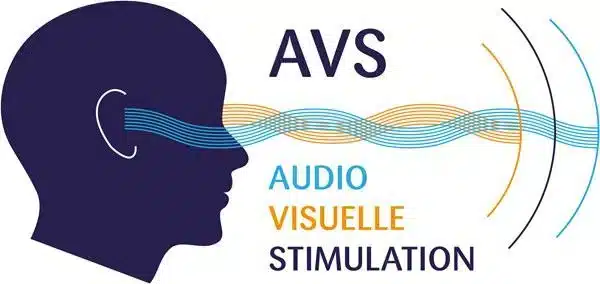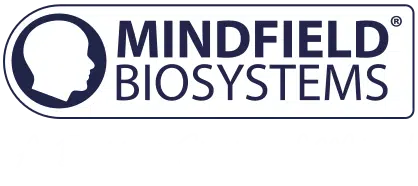Introduction to Audio-Visual Stimulation (AVS)
What is audio-visual stimulation?
The principle of audio-visual stimulation is based on the stimulation of the central nervous system with specific visual and audio signals. These signals influence the brain in various ways depending on the sounds delivered by the headphones and the light signals that are displayed over one’s entire field of vision by the LED mask.
Imagine the calming effect of a flickering, crackling camp fire. With the right settings, MindLights’ effects on your mental state are similar but are much more powerful and specific. Beyond this, there are many different areas of application.

What Uses are There?
- Increased concentration, perception and memory
- Overcoming tiredness and exhaustion
- Induces deep relaxation
- Increases stress resistence
- Inducing meditative and trance-like states
- Promotes creativity
- Use of hypnagogic state for auto-suggestion and affirmation
- Overcoming problems with falling- and staying asleep
- Promotion of healthy and refreshing deep sleep
- Stress disorders and nervousness
- Tinnitus
- ADD und ADHD
- Symptoms of dementia
- Depression and anxiety problems
- Pain (especially fybromyalgia)
- Blood pressure
- Sleep disorders
Distinction from Neurofeedback and Biofeedback
Audio-visual stimulation is, as the name suggests, a process of stimulation. This entails that the effects are largely confined to the time of use and a few hours following use.
Neurofeedback and Biofeedback in contrast are methods which involve a learning process which can be effective over weeks, months and years after treatment.
Although there are overlaps in the areas of use, audio-visual stimulation is largely characterised by its relaxing effect, while Biofeedback and Neurofeedback offer far more specific possibilities.
Audio-visual stimulation is quick, good value and easy to use, which makes it particularly attractive for private users. It is often an ideal supplement to Biofeedback and Neurofeedback.
Research on Audio-Visuellen Stimulation
The effects of audio-visual stimulation on the human body and mind have been investigated in many scientific surveys and studies. Examinations by electroencephalogram (EEG) show altered brain waves as a reaction to both visual and acoustic signals(1, 2).
The results of various clinical studies prove that AV stimulation has positive effects on stress and anxiety, the ability to focus mentally, and can significantly reduce pain associated with various diseases (3).
In a survey of patients suffering from migraines and tension headaches, 49 out of 50 patients claimed they felt less pain after the stimulation. 36 patients even claimed they had no pain left at all (4).
The University of Hamburg has successfully treated patients with tinnitus with audio-visual stimulation for many years (5). Prof. S. Tönnies has provided us with his guidelines for successful stimulation and these have been are incorporated into the MindLights® software.
MindLights® can be implemented into an ongoing treatment concept and can easily be used at home. MindLights® can be rented out as well
(1) Collura, T.F. (2001). Application of repetitive visual stimulation to EEG neurofeedback protocols. Journal of Neurotherapy, 6(1), 47-70.
(2) Frederick, J.A., Timmerman, D.L., Russell, H.L., & Lubr, J.F. (2004) EEG coherence effects of audio-visual stimulation (AVE) at dominant and twice dominant alpha frequency Journal of Neurotherapy, 8(4), 25-42.
(3) Huang, T.L., & Charyton, C. (2008) A comprehensive review of the psycholo gical effects of brainwave entrainment. Alternative Therapies in Health and Medicine, 14,5.
(4) Anderson, D. (1989) The treatment of migraine with variable frequency photic stimulation. Headache, 29, 154-155.
(5) S. Tönnies (2006) Entspannung für Tinnitusbetroffene durch Photostimulation. HNO 2006 · 54:481–486
How long does a session last?
A session normally lasts for about 15 to 60 minutes, depending on the user’s goals. We recommend at least 15 minutes because it usually takes some time for the effects to arise. A session lasting longer than 60 minutes is usually not needed to experience the full effects.
How often should sessions take place?
Many people use audio-visual stimulation on a daily basis, but even weekly use is effective. It is flexible enough to be easily adapted to fit a busy lifestyle.
Are there side-effects?
Epilepsy sufferers and people with photosensitivity can not use audio-visual stimulation devices, which could, among other things, cause an epileptic fit. Sessions must be ended immediately if the subject feels unwell. Otherwise no side-effects are known.







